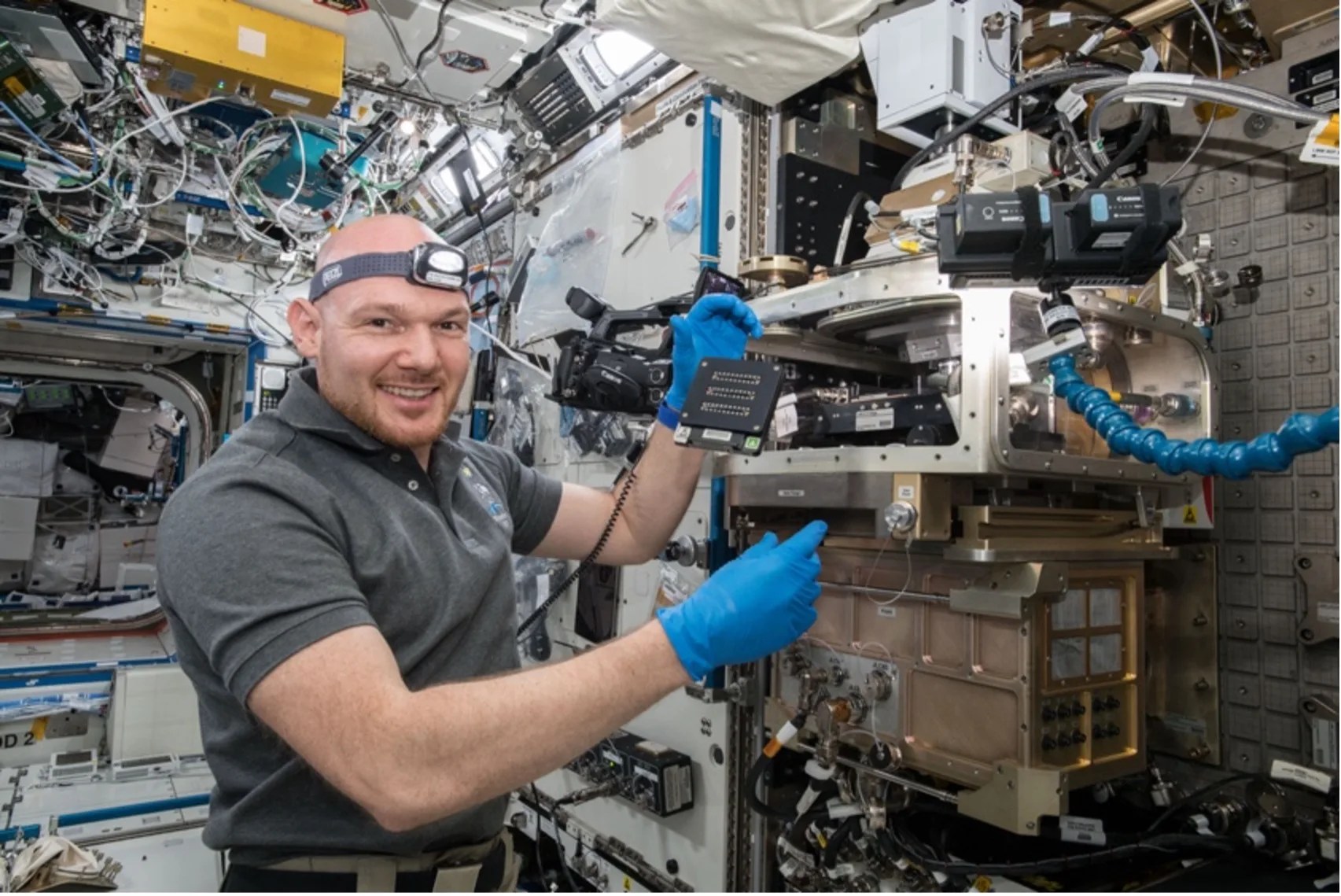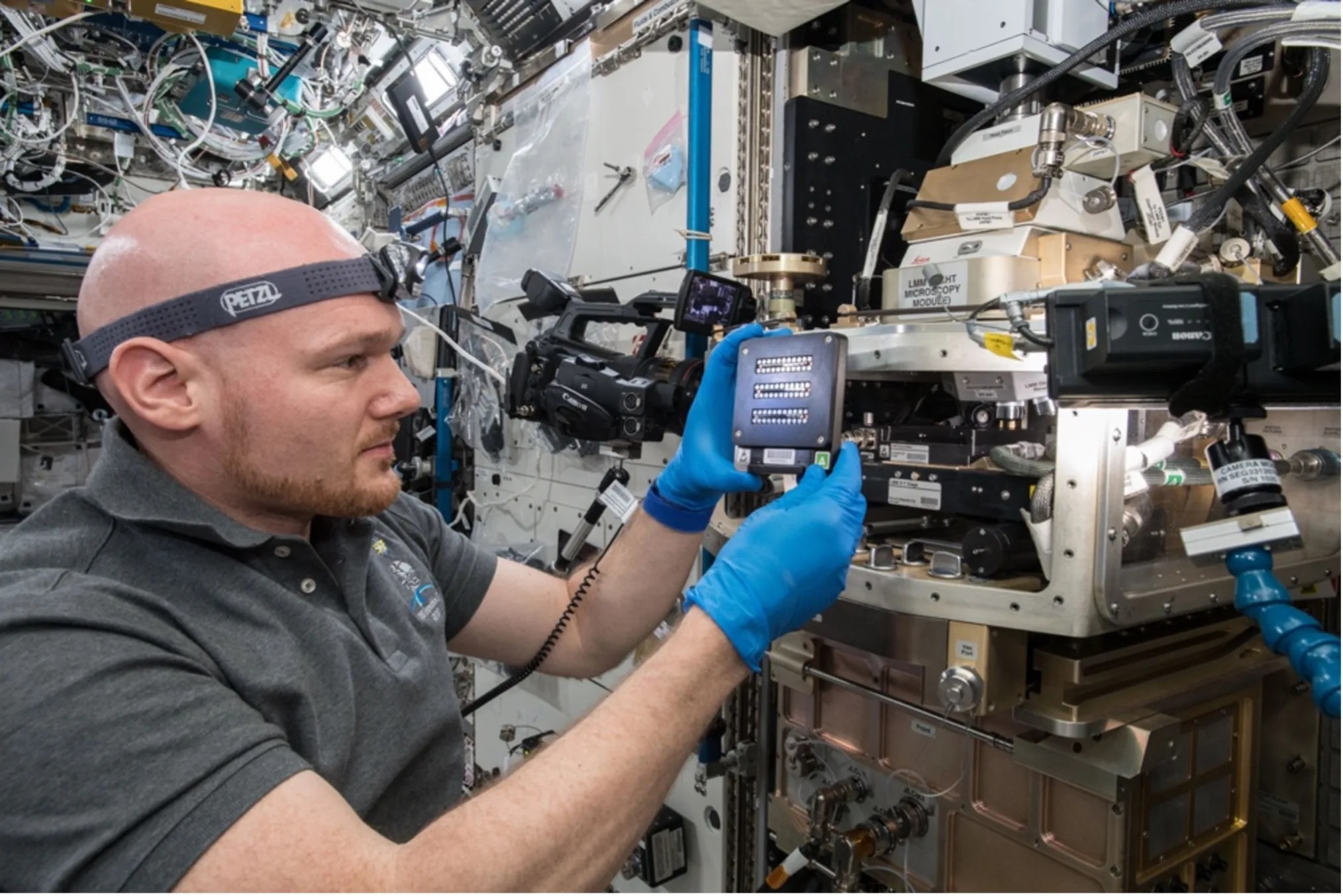Advanced Colloids Experiment – Temperature-7 (ACE-T-7)
Science Objectives
The Advanced Colloids Experiment-Temperature-7 (ACE-T-7) experiment involves the design and assembly of complex three-dimensional structures from small particles suspended within a fluid medium. These so-called “self-assembled colloidal structures”, are vital to the design of advanced optical materials and active devices. In the microgravity environment, insight is provided into the relation between particle shape and interparticle interactions on assembly structure and dynamics: fundamental issues in condensed matter science.
Status
The experiment has concluded, and science is being evaluated.

Experiment Description
An outstanding problem in condensed matter science concerns the relation between particle shape, crystal symmetry and structure. The simplest and most symmetric crystal is cubic and is naturally comprised of cube-shaped ‘particles.’ In atomic systems, these are cubic lattices of atoms; in our colloidal structures, the constituent particles are, in fact, colloidal cubes. The research goal is to produce such colloidal structures and study the dynamics of crystal nucleation and growth. Advanced Colloids Experiment-Temperature-7 (ACE-T-7) varies the size and concentration of the depletant in different samples with the goal of seeing the effect on crystallization. The imaging goal is to observe crystallites and resolve particle centroid positions with less than 20% error.
Space Applications
Eventually, future space exploration may use self-assembly and self-replication to make materials and devices that can repair themselves. Self-assembly and evolutionarily optimized functional units are key to long-duration space voyages.
Earth Applications
This investigation involves several fundamental and practical aspects of soft matter science with potential applications on Earth. Self-assembly processes are crucial to making functional materials and devices from small particles. Improved design and assembly of structures in microgravity may have use in a variety of fields from medicine to electronics on Earth. Ultimately, the ability to design and build functional structures based on colloids allow new devices for chemical energy, communication, and photonics, including photonic materials to control and manipulate light.































